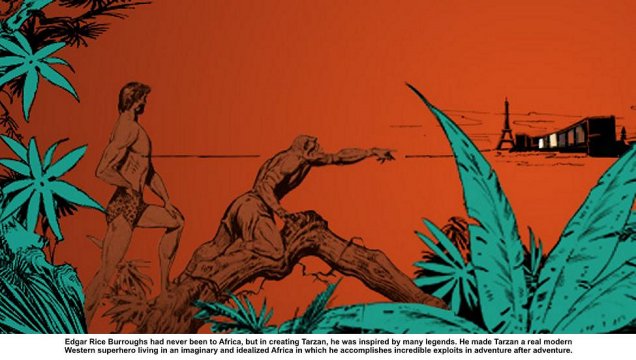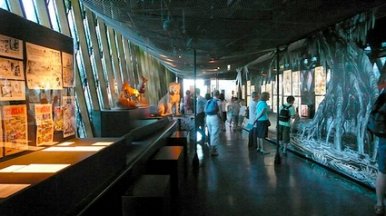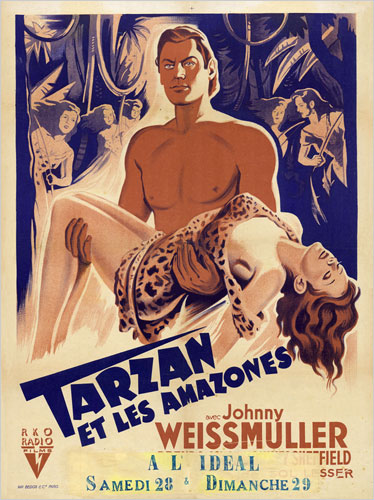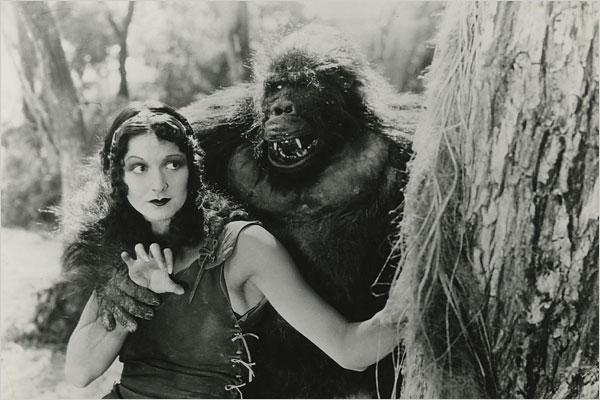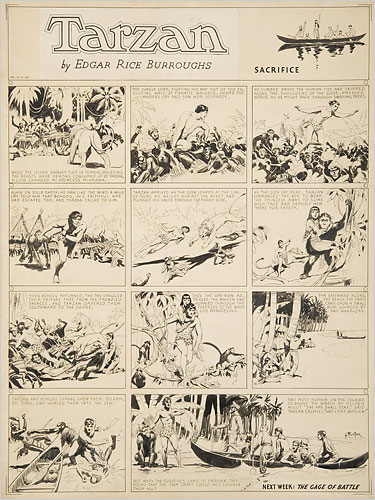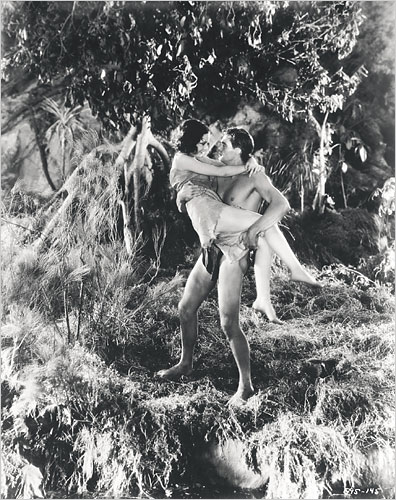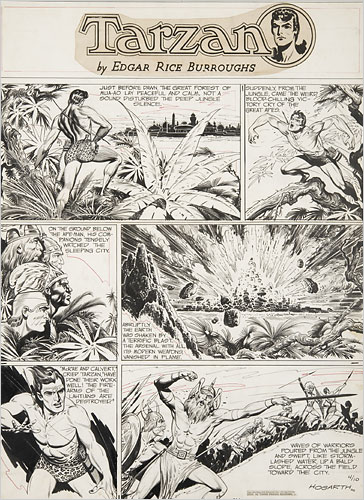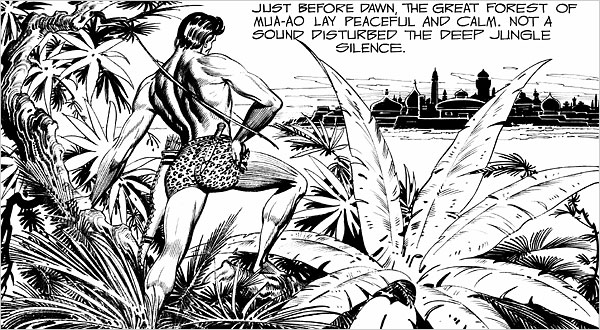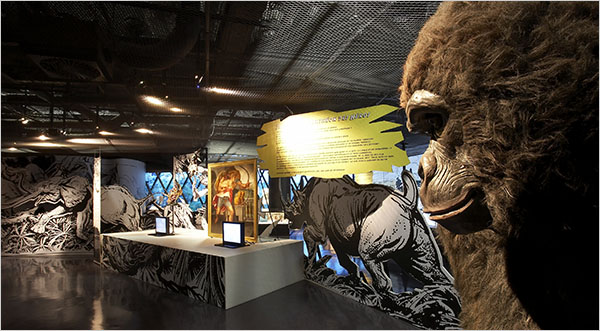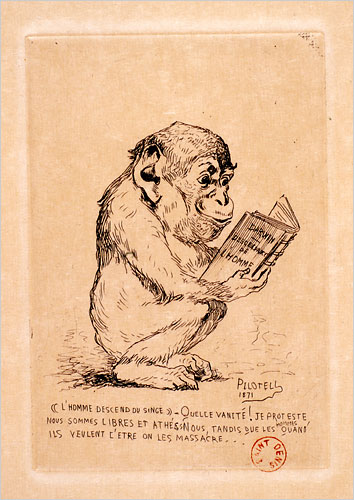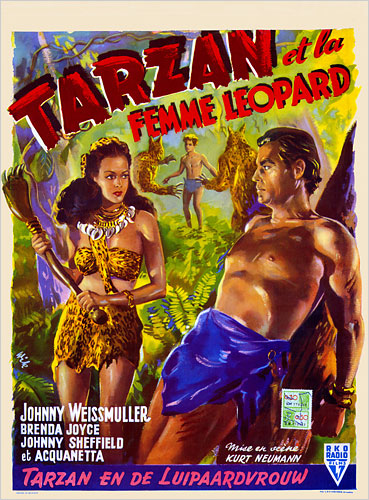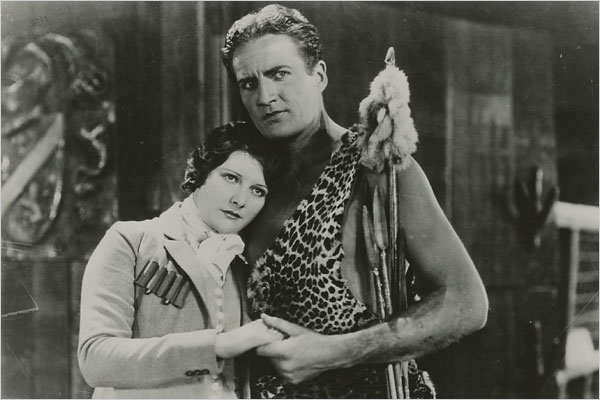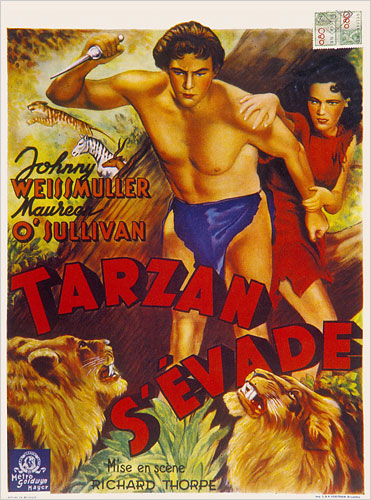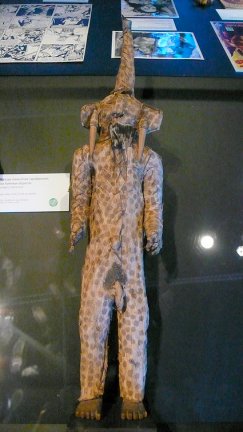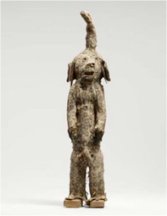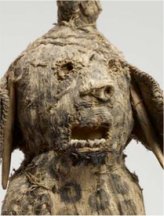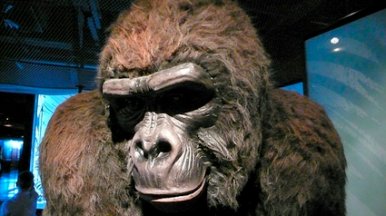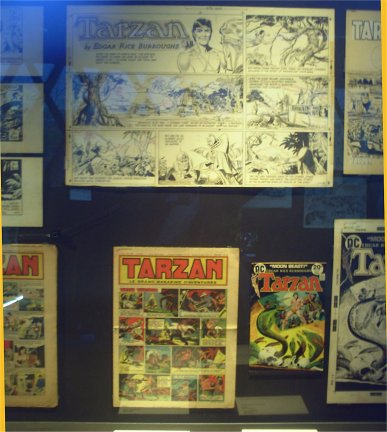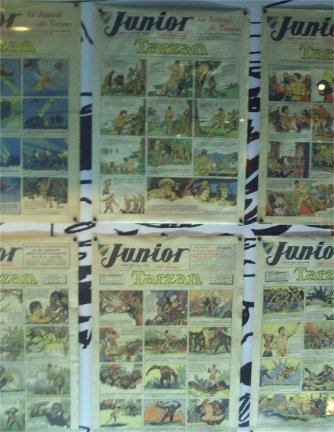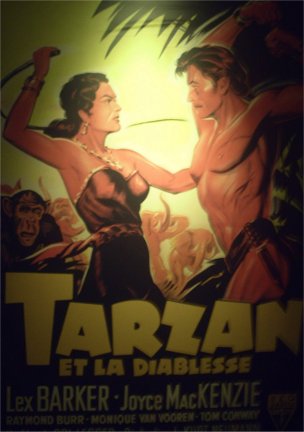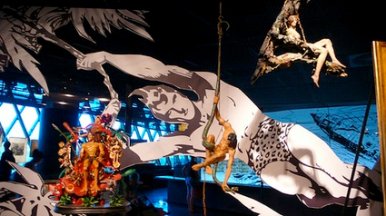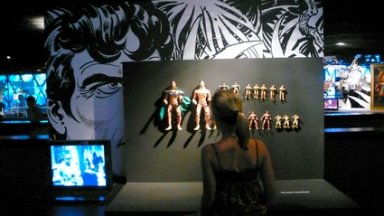Tarzan ! Tarzan !
Musée
du Quai Branly
16 June - 27 September 2009
Curator: Roger Boulay
Roger Boulay is an anthropologist, a specialist in
the art of Oceania and an exhibition curator. He was curator for the exhibition
"L'aristocrate et ses cannibales : le voyage en Océanie du comte
Festetics de Tolna, 1893 - 1896" (The aristocrat and his cannibals : the
voyage of the Count of Festetics de Tolna, 1893 – 1896, to Oceania), held
in 2007 at the Musée du Quai Branly.
“It was as though I had been suddenly snatched back through
countless ages to a long-dead past, and dropped into the midst of the prehistoric
life of my Paleolithic progenitors” . . . “Tarzan thought of the fragile
frontier between the primitive and the civilised”.
~ Edgar Rice Burroughs
Copyright © by Edgar Rice Burroughs, Inc. All Rights
Reserved
This exhibition dedicated to an icon of popular culture allows
the public to discover how the hero was created and decipher the myth that
he embodies.
Although Edgar Rice Burroughs is the father of the Tarzan
character, all those who used him in comics, film, posters, models, records,
games , etc. refer to collective images and representations that are at
the roots of one of our century’s strongest myths.
The exhibition looks at the origins and nature of Tarzan,
as a character as well as a myth (from Saturnin Farandoul, a 1914 documentary,
to Greystoke in 1983), and redefines the character as a modern hero fighting
for the protection of nature.
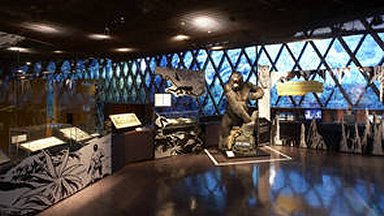
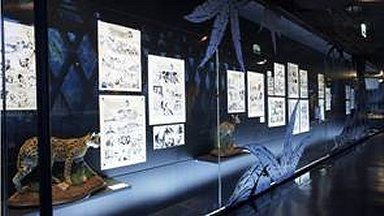
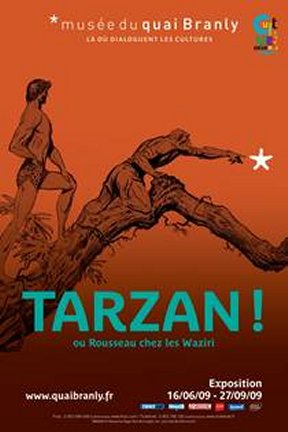 PARIS
— Last week it was announced in Britain that “Me Cheeta,” the comic “autobiography”
of Tarzan’s sidekick, now a septuagenarian, was a finalist for the Man
Booker Prize. Leave it to the French, meanwhile, to resuscitate Tarzan
only to stick him in a semiotic jungle.
PARIS
— Last week it was announced in Britain that “Me Cheeta,” the comic “autobiography”
of Tarzan’s sidekick, now a septuagenarian, was a finalist for the Man
Booker Prize. Leave it to the French, meanwhile, to resuscitate Tarzan
only to stick him in a semiotic jungle.
Edgar Rice Burroughs's famous ape man is the subject of
a summer show at the Musée du Quai Branly here that mixes old comics
and film clips with children’s action figures, a stuffed crocodile and
the female robot from “Metropolis.” (Don’t ask.)
This being a serious museum, there are a few genuine African
totems and shields, which look as out of place in this context as Maureen
O’Sullivan did, toting her banana-leaf pocketbook and wearing a pair of
homemade pumps, while standing in the bush beside the loinclothed Johnny
Weissmuller and two forlorn elephants in the film “Tarzan Finds a Son!”
The show has been wildly popular.
Its organizers cogitate, with Gallic élan, on Tarzan’s
proto-environmentalism; his philosophical roots in Rousseau and the 19th-century
nudist movement; his literary antecedents in Kipling and H. M. Stanley;
and his mythological reliance on the stories of Hercules and Romulus and
Remus. The exhibition also makes hay about the first words Tarzan uttered
not in ape grunts but the language of civilized men: "Mais oui," the young
Lord Greystoke said.
And of course there is also the sex angle. “One can expound
as much as one likes in scientific speeches about his mythical and universal
nature, but one always gets back to the fact that Tarzan is a half-naked
guy saving white-skinned young women, lost in the jungle and wearing their
party dresses, from the claws of vicious gorillas,” noted Libération,
the newspaper, in its review of the exhibition. “It’s all about torrid
eroticism.”
So it is.
The show is a mess, truth be told. It has wonderful drawings
from bygone comic artists like Burne Hogarth and Hal Foster, and it means
to use Tarzan to help dissect how Western pop culture has (mis)interpreted
the non-Western “other.” But it’s displayed in cramped galleries at a museum
whose theatrical, heart of darkness installation of non-European cultures
as diverse and unrelated as Inuit and Cameroonians — in meandering ill-lighted
spaces connoting primitive, spooky peoples — is of a piece with the antediluvian
ethos of the original Tarzan.
The highborn “killer of beasts and many black men,” as
Tarzan unfortunately described himself in “Tarzan of the Apes,” was conceived
just before World War I by Burroughs, a former gold miner and cowboy, in
a climate of American expansionism, late colonialism and institutionalized
racism.
Before he died in 1950 Burroughs published about two dozen
Tarzan potboilers, his fictional character becoming an increasingly fantastical
figure, speaking a dozen languages while battling the teensy Minunians
and dinosaurs. An easygoing guy with a fondness for golf who settled in
what came to be called, thanks to him, Tarzana, Calif., Burroughs never
bothered to set foot in Africa, which is why Tarzan also faced off against
Asian tigers and killed lions by wrestling them into a full nelson. As
Gore Vidal once phrased it, the author of Tarzan was “not one to compromise
a vivid unconscious with dim reality.”
This turned out to make his work like catnip for Hollywood
producers who, beginning in 1918, released Tarzan movies more frequently
than Burroughs did books. They were the perfect vehicles for parading stars
in various states of undress.
“In the first Tarzan movies,” said Charles Tesson, who
picked the film clips for the show, “Tarzan wears a tuxedo. After Weissmuller
took the role, he becomes a superhero, an abandoned child, an amnesiac,
a naïf, pure but strong, très sportif.”
The exhibition’s principal curator, Roger Boulay, stressed
how not just Tarzan films but also comics and books became a barometer
of shifting political and social standards, in France no less than in America.
The blue-blood colonialist defending Africa for white people for years
played off against this country’s foreign escapades as well as its anxieties
about miscegenation. Expurgated and unexpurgated versions of the comic
strip were published here, one with Jane dressed for innocent French youngsters,
the other with her in nature’s own to please more seasoned aficionados.
An alliance of French Catholics and Communists eventually pushed through
a law that, for a while, purged Tarzan from French movie theaters.
“For the Catholics it was the nudity,” Mr. Boulay explained.
“For the Communists it was the fact that he was a violent, unemployed aristocrat
who ate bananas.”
In America, Tarzan on screen, as he did in some of the
later Burroughs books, went the way of late Dick Tracy in the funny pages.
By the 1970s Tracy was battling outer space criminals on the Moon in a
rocket-powered garbage can. Tarzan vanquished Vikings and ancient Romans
and during World War II joined the Foreign Legion to fight the Japanese
on Sumatra.
The exhibition ends with a French television advertisement
for men’s perfume, directed by the great Jean-Paul Goude, from 2005. A
male model joins leopards and monkeys drinking at a watering hole. “Guerlain
Homme,” a voice-over intones. “For the animal in you.” It’s a throwback
to the Tarzan who hadn’t yet morphed into a time-traveling Superman.
That’s one plausible explanation for the show’s popularity:
fondness for a gadgetless hero from the days before “Transformers: Revenge
of the Fallen.”
There’s also the cachet of the eco-warrior, which the
exhibition pushes hardest and which plays well here in France: Tarzan protecting
the jungle from greedy commercial interests. But Libération no doubt
had it right. The Parisian boys glued the other morning to a video monitor
playing a clip from “Tarzan and His Mate” (1934) didn’t seem to be rapt
by the concept of environmental preservation.
The movie was the first major instance in America of censorship
under the Hays Code, which cracked down on racy Hollywood fare. In this
case the outrage was over a skinny-dipping scene: a body-double for O’Sullivan
briefly swimming underwater buck naked with Weissmuller.
The boys stared with great scientific interest.
Tarzan turns out to be a man for all times, having swung
across the centuries, through eras of colonialism and multiculturalism,
austerity and profligacy.
But some things never change.


